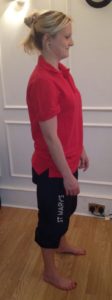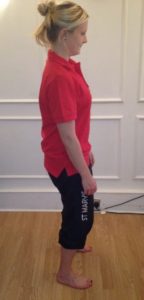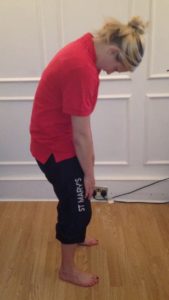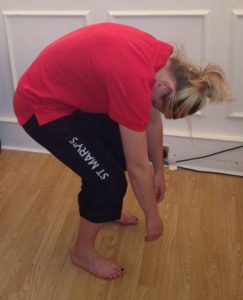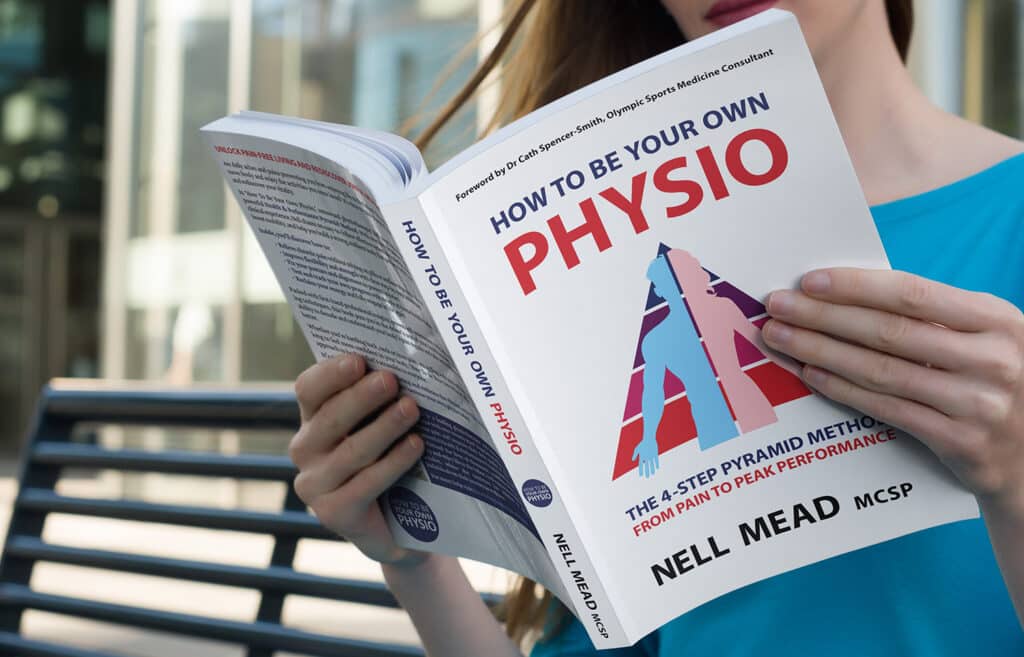If I hear someone saying “bend your knees, not your back!” once more, I think I might scream. Why? Because it’s just so wrong, and so counterproductive. Think about it. You have 29 bones in your spine (7 in your neck, 12 in your thorax, 5 in your low back and 5 — mostly fused — bones in your sacrum). Given that the sacrum is mostly fused, you have 20 movable, functioning, weightbearing joints in a normal, healthy spine: from L5/S1 at the bottom, where your low back meets your pelvis, to C1/C0 at the top, where your neck meets your skull. Each joint is cushioned by discs made of spongy cartilage, and controlled by ligaments and muscles.
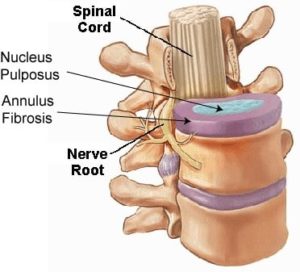
These ligaments and muscles combine with the shape of the bones to allow you to bend in all directions: forwards, backwards and sideways; and to twist and rotate, and to perform all these movements in an infinite variety of combinations. And — as I’ve said before — if you don’t use these movements regularly, and flamboyantly, you’ll lose the ability to do them properly, and this loss of movement is frequently a precursor to injury, as the stiffer and less conditioned to movement you are, the less able your body is to roll with the punches and cope with unexpected movements. In which situation, your spine might just as well be one long bone, rather than being a chain of little movable ones.
The biggest movement most people’s spines are able to produce is flexion, bending forward towards your toes. This is a function of the shape of your spine: to flex, each upper vertebra has to tilt forward on the one below it, squashing the disc at the front and stretching it at the back. The back of the disc (made of the same substance as ligaments) is designed to stretch by up to 90% to allow this movement to happen. Simultaneously, the facet joints at the back open out and their joint capsules (also made of the same substance as ligaments) also stretch.
The bit about ligament tissue is important, because it’s by stretching ligament (for short periods, and with a force less than that required to take it to its elastic limit) that it responds by building more tissue and getting stronger. If you don’t stretch it, it gets weak. And that’s why it’s so wrong to avoid bending: if you avoid bending, you’ll weaken your back.
However, the conventional wisdom is that flexion — particularly combined with rotation –causes your discs to herniate. That’s partly true. It’s true of people who have weakened their backs in the first place — either by not routinely bending (so they become stiff and weak), or by bending or slouching for prolonged periods (in this case, instead of becoming stronger, the discs and joint capsules become overstretched and weak). Also, because lots of people have heard the “bend your knees, not your back” mantra, they become scared to bend — something that can actually make back pain worse, because if you have back pain, avoiding bending can lead to a chronic pain pattern with central nervous system hypersensitivity — much harder to treat than the original back pain issue!
Clearly, therefore, some bending is safer than others, so — particularly for people who are new to bending — here is Helen Murawska showing us how Sarah Key teaches us how to bend.
First, stand straight, with your weight evenly through both feet. Pull your tummy in and lift up your pelvic floor. This increases the pressure in your abdomen, which helps to stabilise your spine and minimise unwanted shearing forces.
- Curl your pelvis underneath you. This slightly tensions your multifidus muscle, which is another key stabiliser of the spine. It also pushes your knees into a slight bend, which minimises any stress through the knees and hamstrings. Sarah calls this “pre-humping” your spine.
- Walk your hands down your thighs and then down your shins. Keep your tummy pulled in.
- Once you’ve walked your hands as far down your shins as you can, let your hands dangle for a few seconds and drop your head, completely relaxing your neck. I call this the “gorilla pose”. Check that your pelvic floor is still switched on, and that your tummy is tightly pulled in.
- To come back up, push your knees forward, then your hips forward, and uncurl your back, bringing your head up last. This should be a sinuous movement, like a wave passing through your body. When you get to the top, check once more that your pelvic floor is still switched on — and then relax.
To keep a strong spine, we should all be doing this every day. And it’s how I think we should lift relatively small, everyday loads. It’s not how we should be lifting Olympic weights, but this is how I get peas out of the freezer, and how I pack my laundry into the washing machine.
If you have back pain when you bend, try this way of bending instead. But if you’re not sure, or if you still have back pain, do come on in and let us work out what’s wrong and how to fix you — you can book an appointment here or call us on 0207 175 0150.

